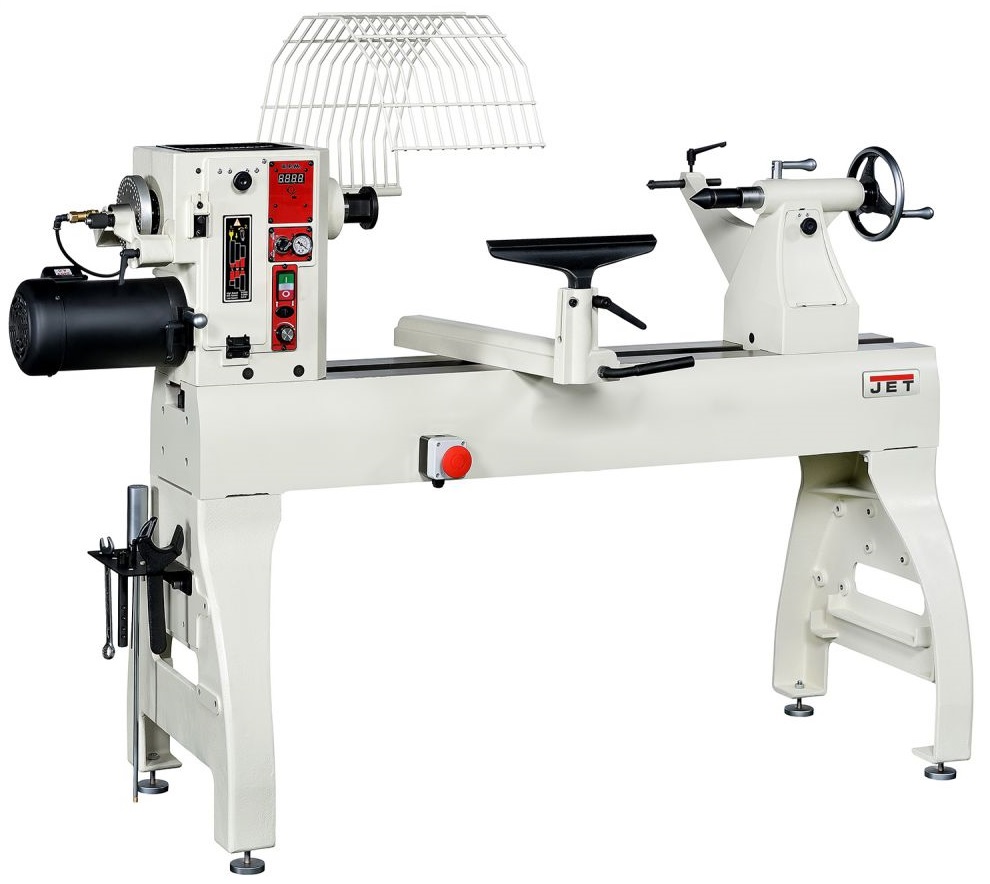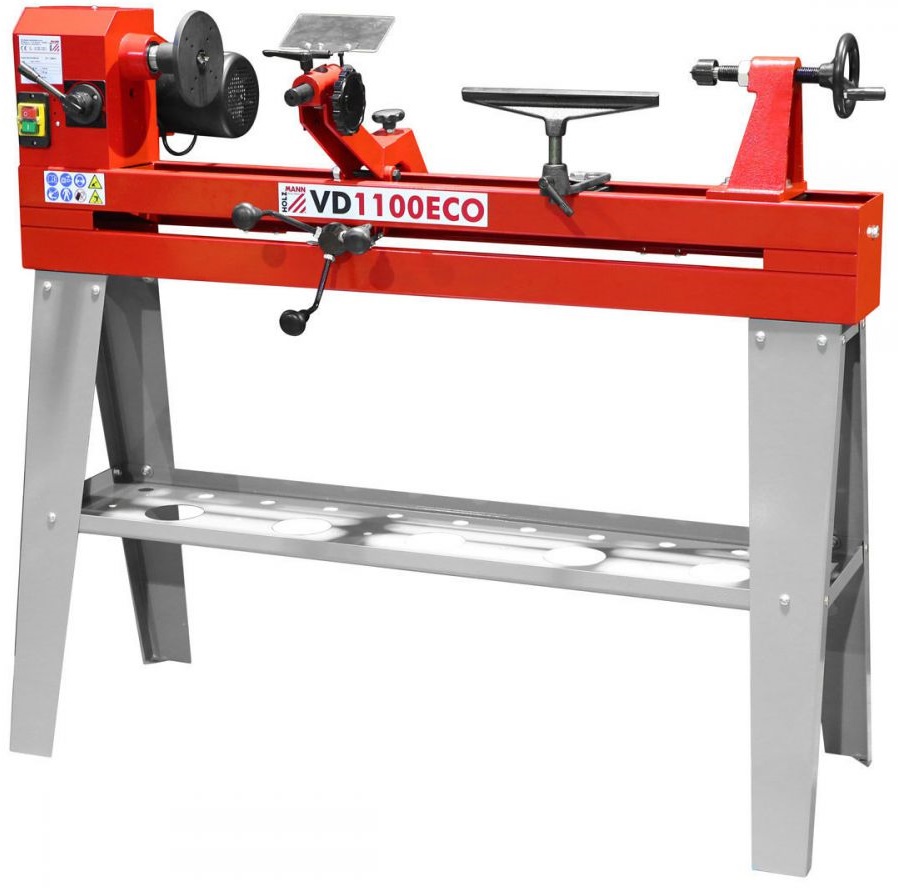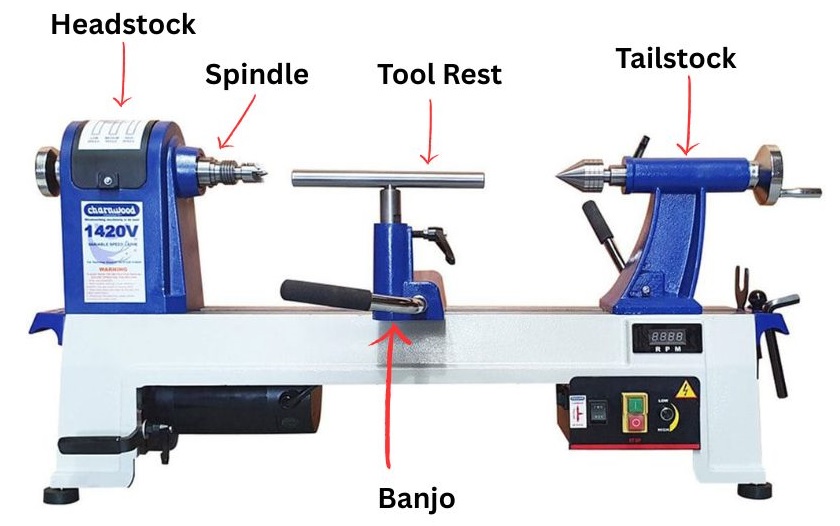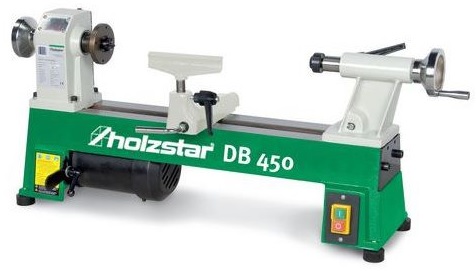A woodturning lathe is a machine that spins a piece of wood so you can shape it using handheld tools. It’s where raw timber transforms into bowls, spindles, pens, and more.
Types of Woodturning Lathe
Mini Lathe
Buying a mini lathe can be a game-changer, especially if you're a hobbyist, DIY enthusiast, or someone working in a small space.
Compact & Space-Saving: Fits easily on a workbench or in a garage. Ideal for small workshops or home studios.
Affordable Entry Point: Great for beginners without breaking the bank. Many models are available under £500, making it budget-friendly.
Versatile Capabilities: Can turn, face, taper, drill, and thread small parts. Works with wood, metal, plastics—depending on the model.
Perfect for Small Projects: Ideal for pens, chess pieces, bushings, screws, and other precision parts. Great for prototyping or crafting custom components.
Portable and Lightweight: Weighs far less than full-size lathes—some under 150 lbs. Easy to move or store when not in use.
Low Maintenance: Fewer components mean simpler upkeep. Easier to clean and troubleshoot than industrial machines.
Midi Lathes
A midi lathe hits the sweet spot between compact convenience and serious capability—making it a top choice for hobbyists, intermediate turners, and even pros who want power without the bulk.
Perfect Size for Most Projects: Offers 12–14 inches of swing over the bed, making it ideal for bowls, platters, spindles, pens, and more. Compact enough for a bench, yet large enough for substantial work.
Powerful Performance: Typically equipped with variable-speed motors and electronic controls, allowing precise adjustments for different materials. Many models rival full-size lathes in torque and RPM range (often 60–4000 RPM).
Expandable: Many midi lathes support bed extensions, giving you the flexibility to turn longer pieces like table legs or lamp bases.
Budget-Friendly: Offers professional-grade features at a fraction of the cost of full-size lathes. Quality models often range from £300 to £700, making them accessible without compromising capability.
Ideal for Small Workshops: Compact footprint fits easily in garages, sheds, or tight studio spaces. Easier to move and store than full-size machines.
Beginner-Friendly, Yet Pro-Ready: Simple setup and intuitive controls make it great for newcomers. Advanced features like digital readouts and reverse rotation appeal to experienced turners too.
Full Size (Large) Lathes
If you're serious about woodturning and want a machine that can handle anything you throw at it, a full-size lathe is the powerhouse you’re looking for.
Massive Turning Capacity: Swing capacities often exceed 16–20 inches, with 36–42 inches between centres, allowing you to turn large bowls, furniture legs, columns, and more. Ideal for professional-grade projects and commissions.
Unmatched Stability: Built with heavy-duty cast iron frames, these machines absorb vibration and offer rock-solid performance, even when roughing out large, unbalanced blanks. That stability translates to smoother finishes and safer operation.
Industrial Power: Motors typically range from 1.5 to 3 HP, with variable speed control and torque that doesn’t quit. You can turn dense hardwoods or massive logs without bogging down.
Advanced Features: Digital readouts, indexing capabilities, reverse rotation, and movable control boxes are common. Many models include height-adjustable riser blocks, tool storage, and customizable accessories.
Room to Grow: Unlike smaller lathes, a full-size lathe won’t limit your ambitions. Whether you're a beginner with big dreams or a seasoned turner, it’s a machine you won’t outgrow. Saves you from upgrading later when your projects demand more.
Professional Credibility: If you're selling your work or teaching, a full-size lathe signals serious commitment and capability.

Look After Your Lathe
Maintaining a woodturning lathe is essential for safety, precision, and long-term performance. These machines are built to last, but only if you treat them right.
Daily Lathe Maintenance
Inspect Morse tapers (headstock and tailstock): Clean out dust and debris to ensure proper seating of centres and accessories.
Check tool rest alignment: Make sure it hasn’t been bumped out of position.
Spin test your blank: Rotate by hand to confirm clearance before powering on.
Clean the lathe bed: Wipe down rails and ways to prevent buildup and rust. Use silicone spray for smooth movement of the banjo and tailstock.
Secure your workpiece: Double-check chuck jaws or faceplate screws for tightness.
Weekly / Monthly Lathe Maintenance
Lubricate moving parts: Apply light oil or silicone to threads, bearings, and slides.
Sharpen tools: Dull tools stress the motor and produce poor cuts.
Check belt tension (if belt-driven): Adjust as needed to maintain consistent speed.
Inspect electrical components: Look for frayed cords or loose connections.
Quarterly Lathe Maintenance
Rust prevention: Especially important if you turn green wood or work in humid environments. Use rust remover and steel wool for any corrosion on the bed or spindle.
Clean headstock threads: Remove sawdust and resin buildup to ensure secure mounting of chucks and faceplates.
Tailstock alignment: Verify that it lines up with the headstock spindle, misalignment can cause vibration and poor cuts.
Motor inspection: Listen for unusual noises or overheating. Clean vents and ensure proper airflow.
If you need some help choosing a wood turning lathe, feel free to contact us on 01726 828388 or email us at info@machinery4wood.co.uk.
 Price
Price






 01726 828 388
01726 828 388









